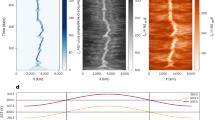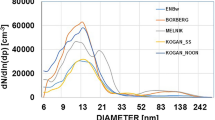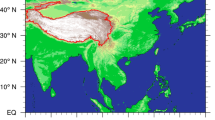Abstract
I DO not think that the method described by Sir G. Archdall Reid in NATURE of November 7, p. 676, is at all of universal application. It certainly cannot be applied to cirro-cumulus; the cloudlets composing lenticular cirro-cumulus not only may wax at one end of the cloud and wane at the other, as mentioned by Sir G. Archdall Reid, but they always behave in this way; I do not think that any of the explanations he gives accounts for the phenomenon, but the point is not to account for it, but to decide whether the waxing or the waning of the cloudlets is to be taken account of in weather prediction. Again, a whole mass of cirro-cumulus cloudlets may form and disappear in a very short time; is the appearance or the disappearance to be reckoned with? The lower clouds seem to me to tell even more against the method; on almost every fine summer morning we may watch cloudlets waxing, but it by no means follows that rain will result; probably in nine cases out of ten it will not. I should imagine that there must be nearly a hundred days every year when the method is disproved by the waxing of cloudlets which will develop not into rain clouds, but into the cumulus of a fine day.
This is a preview of subscription content, access via your institution
Access options
Subscribe to this journal
Receive 51 print issues and online access
$199.00 per year
only $3.90 per issue
Buy this article
- Purchase on SpringerLink
- Instant access to full article PDF
Prices may be subject to local taxes which are calculated during checkout
Similar content being viewed by others
Author information
Authors and Affiliations
Rights and permissions
About this article
Cite this article
CAVE, C. Weather Prediction from Observations of Cloudlets. Nature 116, 749 (1925). https://doi.org/10.1038/116749b0
Issue date:
DOI: https://doi.org/10.1038/116749b0



